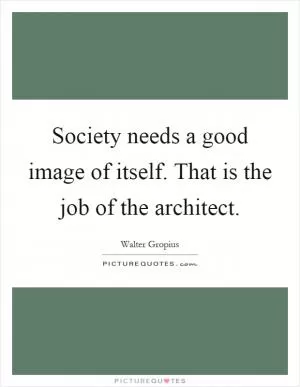Architecture begins where engineering ends

Architecture begins where engineering ends
Walter Gropius, a pioneering architect and founder of the Bauhaus school of design, is often credited with the quote, "Architecture begins where engineering ends." This statement encapsulates Gropius' belief in the importance of the artistic and creative aspects of architecture, beyond the purely functional and technical considerations of engineering.Gropius was a key figure in the development of modern architecture, which sought to break away from the ornate and decorative styles of the past and embrace a more minimalist and functional approach. He believed that architecture should not only serve a practical purpose but also inspire and uplift the human spirit. This philosophy is evident in his most famous works, such as the Bauhaus building in Dessau, Germany, which features clean lines, simple forms, and an emphasis on light and space.
For Gropius, architecture was not just about constructing buildings, but about creating environments that enhance the quality of life for those who inhabit them. He saw architecture as a form of art that could express the values and aspirations of a society, as well as provide a sense of identity and belonging. In this sense, architecture goes beyond the technical aspects of engineering to encompass a broader range of considerations, including cultural, social, and aesthetic factors.
Gropius' approach to architecture was highly influential and laid the foundation for the modernist movement in architecture that followed. His emphasis on the integration of art, technology, and social responsibility continues to resonate with architects and designers today. By pushing the boundaries of traditional architectural practice and embracing a more holistic and interdisciplinary approach, Gropius helped to redefine the role of the architect in society.












 Friendship Quotes
Friendship Quotes Love Quotes
Love Quotes Life Quotes
Life Quotes Funny Quotes
Funny Quotes Motivational Quotes
Motivational Quotes Inspirational Quotes
Inspirational Quotes